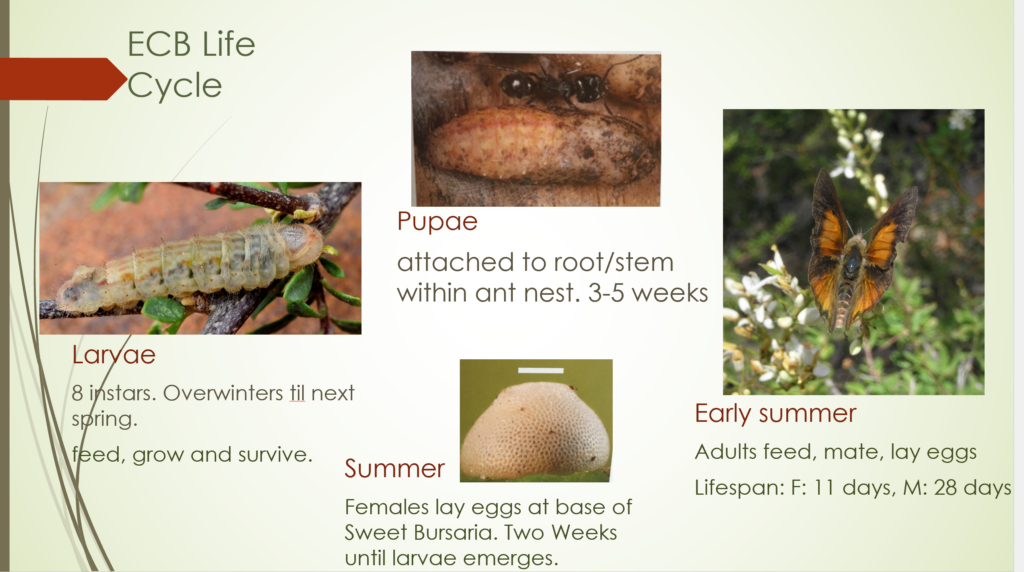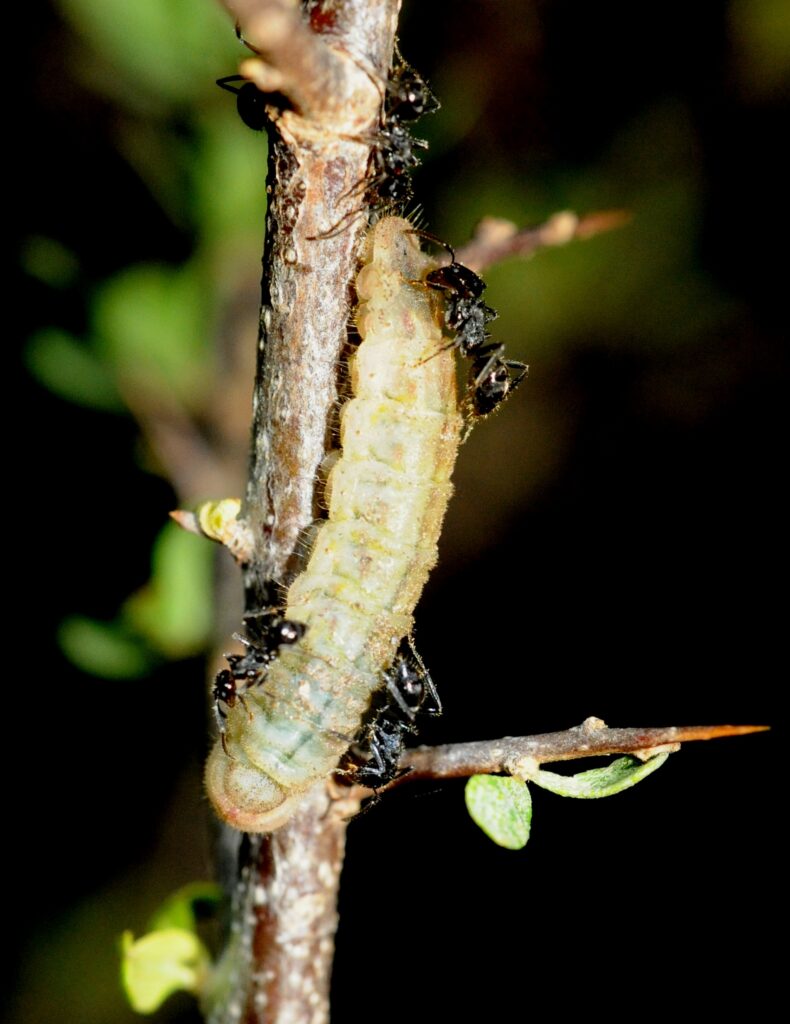There are four stages in the metamorphosis of butterflies: egg, larvae (caterpillar), pupae and adult.

Pupae and egg images from Robb P. Field Butterflies Identification and life histories 2013
Eggs can be found on the leaves and branches of Sweet Bursaria or around the base of the plant. ECB eggs take about two weeks before they emerge as larvae.
ECB larvae are the longest stage, the length of time most likely varies from season to season and between each region but is most likely up to one year,. The larval stage lives by day underground in the Notoncus ant nest, at the base of a Sweet Bursaria. Larvae only come out after dark on warm nights (>12°), attended by nocturnal Notoncus ants, to feed on Sweet Bursaria leaves (exclusively).
They can be seen by searching the Sweet Bursaria at night with a torch. The ants frenetic movement is more easily seen than the larvae.
As the larvae eat they grow and become too big for their skin. To accommodate this growth, they moult or shed their skin. The new skin is soft but soon hardens. The intervals between moults are called instars ECB go through five instars, each one being bigger than the other. The fifth one is around 18mm.
Adult ECB only emerge from this underground haven when the weather starts to warm from late November until early January, with a smaller emergence in some areas in April and May in some areas.

After the fifth instar they change into a pupae. This is generally found underground on the root of Sweet Bursaria.
After 3-5 weeks the pupae turns into the adult ECB and the cycle is repeated.
The Butterfly
Female ECB eggs lay eggs singly or in small groups on or at the base of the Sweet Bursaria. It is believed that females use spurs on her feet and chemoreceptors to detect if plant is nutritious and has Notoncus ants. It is important the female ECB lay eggs in an area that is not too dry or eggs will dry out or too wet that they will be prone to mould. Eggs hatch after 2 weeks and larvae of all instars are attended by ants. Larvae feed at night and remain in day in subterranean nest chamber of ants. Ants shepherd larvae out to feed on warm nights. Pupate in nest chamber and adult emerges after 3-5 weeks but may be longer if food poor.
Female lives for up to 11 days, males for 28 days (Andrea Canzano unpublished). Females emerge later and live for a shorter period. They generally mate shortly after they emerge and spend time finding a mate, searching for location to lay eggs. They don’t venture far from pupal plant.
Males have to find a female and generally emerge prior to females so they are ready to mate.

Eggs
Eggs are laid at the base of the host plant near the ground rarely on leaf litter near the plant base (Braby 1990). Eggs generally last 2 weeks before 1st instar emerges through nibbling through the egg at the top. Eggs are mandarin shaped and inverted at the top. They have tiny pores through which gas exchange can occur so larvae can breath.
Larvae
Larvae have 5 instars (2.5mm-18mm long). Longest life stage. Feeding stage. Feed til April/May. After this they don’t diapause, so many emerge on warm nights over this period when >15°. Mostly stay underground til spring. Major growth phase from Sept onwards(New 2011).
Pupa
Pupa (10-14mm). NON-feeding. Larvae pupate in the ant nest on the stem or root of Bursaria. Takes 3-5 weeks before emergence. They may spin a silk girdle, Blues don’t make a cregaster – a silk pad to attach to.